Angélica Teuta
Bio: Angélica Teuta (1985) is a nomadic Colombian artist. She creates site-specific installations that immerse the visitor in a fictional ambience that talks about the context or needs that she and her surroundings experience. Inspired by 19th century ghost imagery, she uses light projections, low-tech machines, recycled resources, and sound. In her current project, she started blending her surreal ambiences with new interests in architecture by designing spaces inside others and ambient rooms.
Teuta has shown large installation projects in the United States, Canada, Norway, Costa Rica, Brazil, and Colombia, and has been published in Artforum and ArtNexus.
Thesis Exhibition
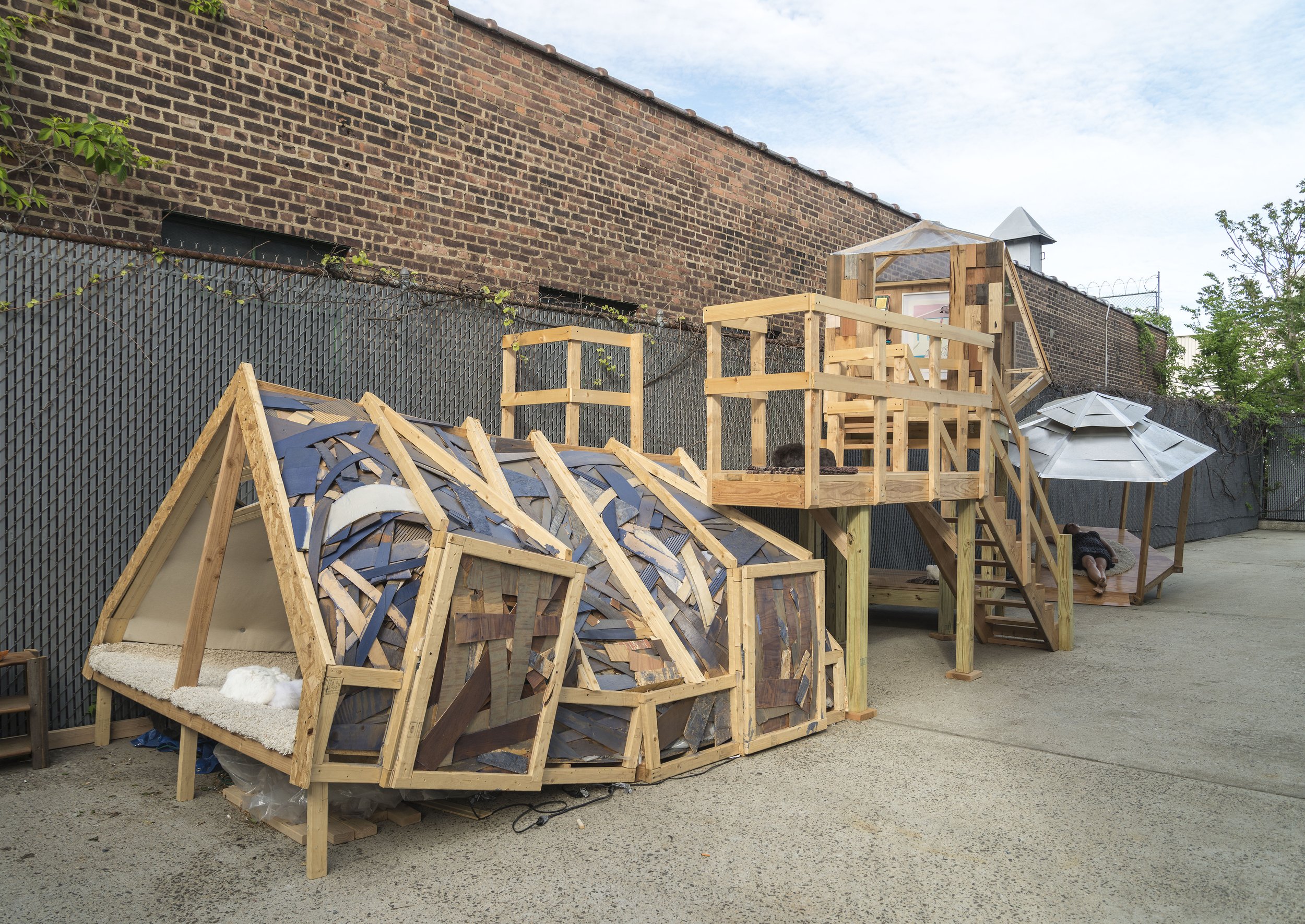
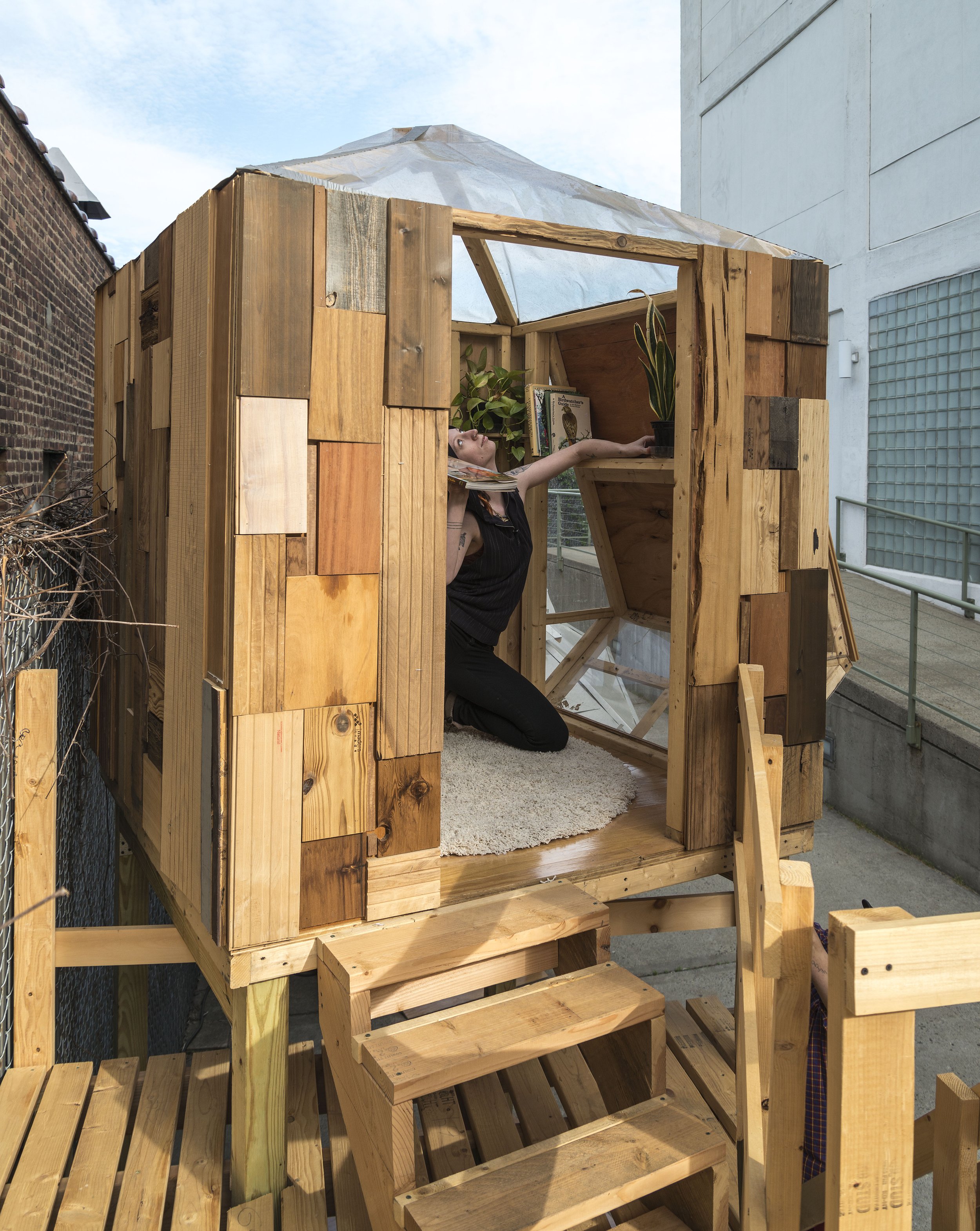
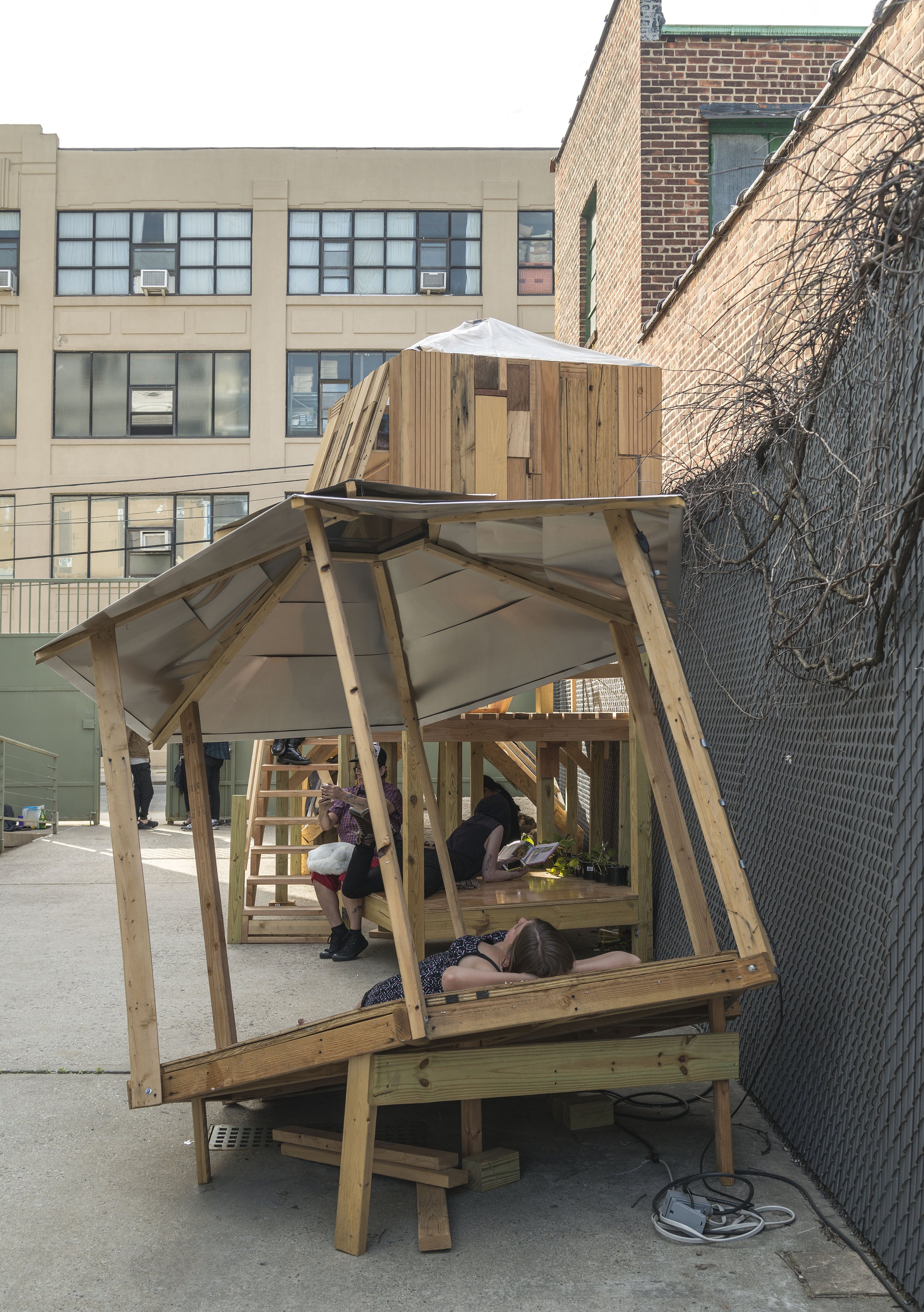
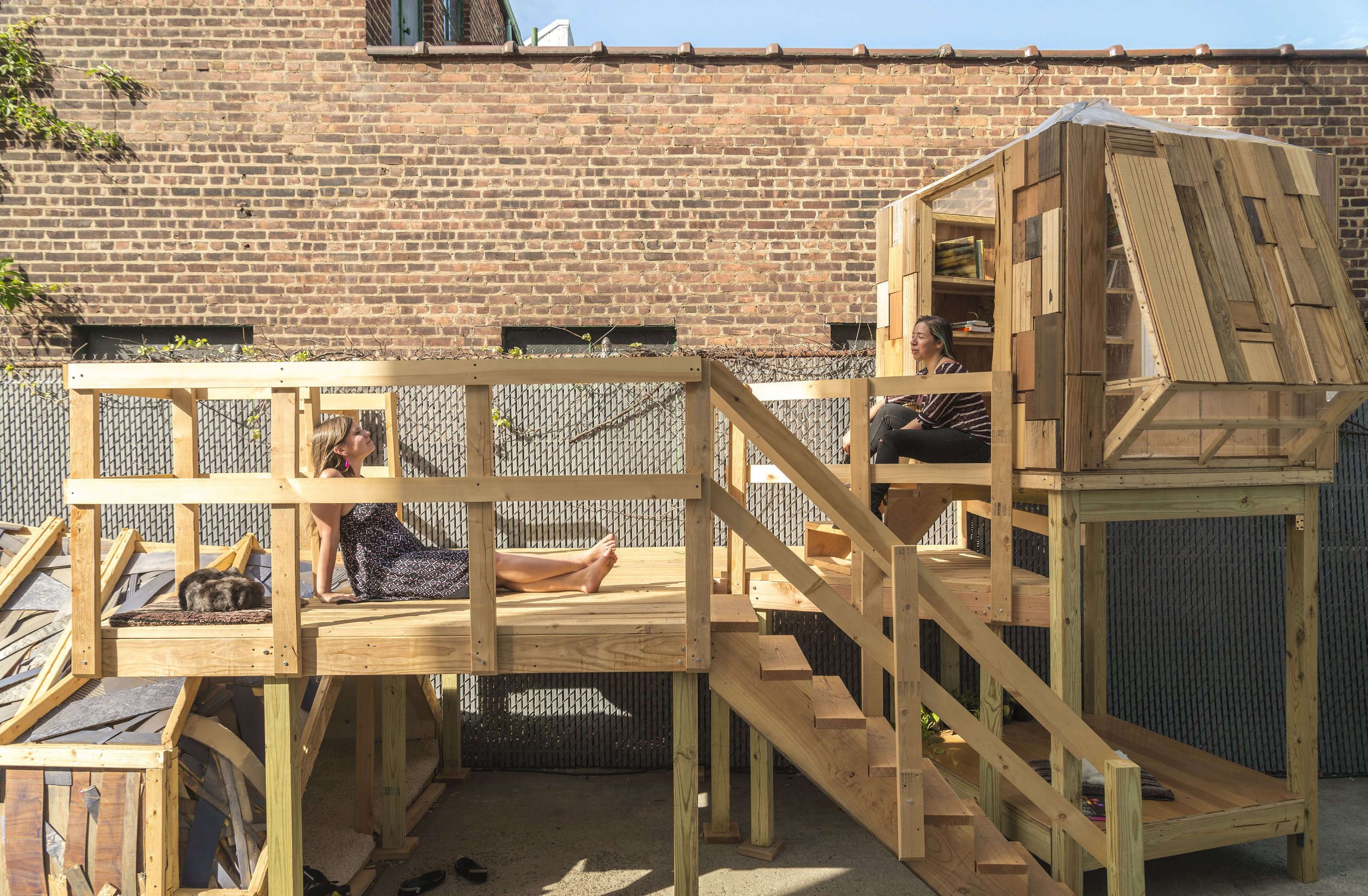
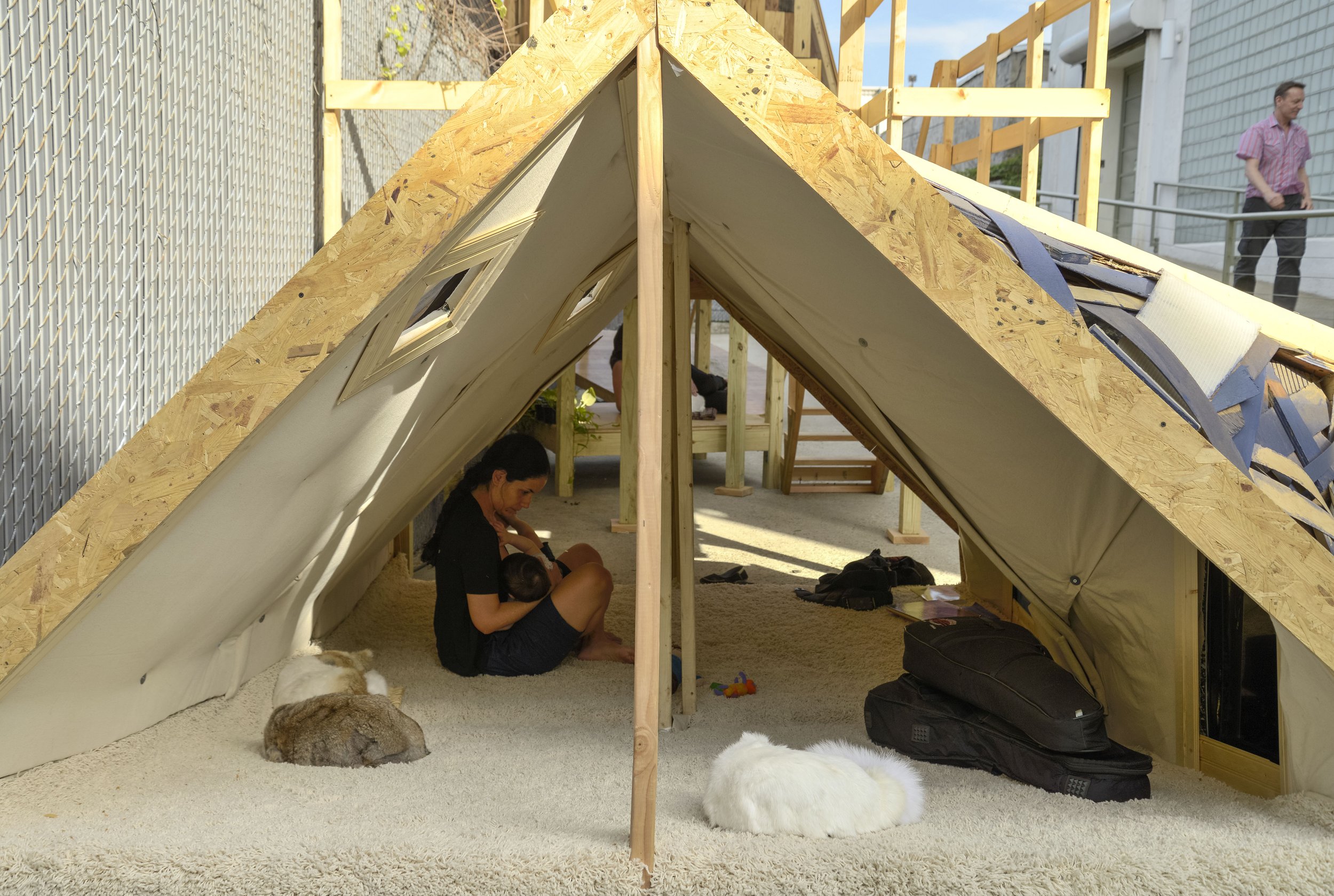
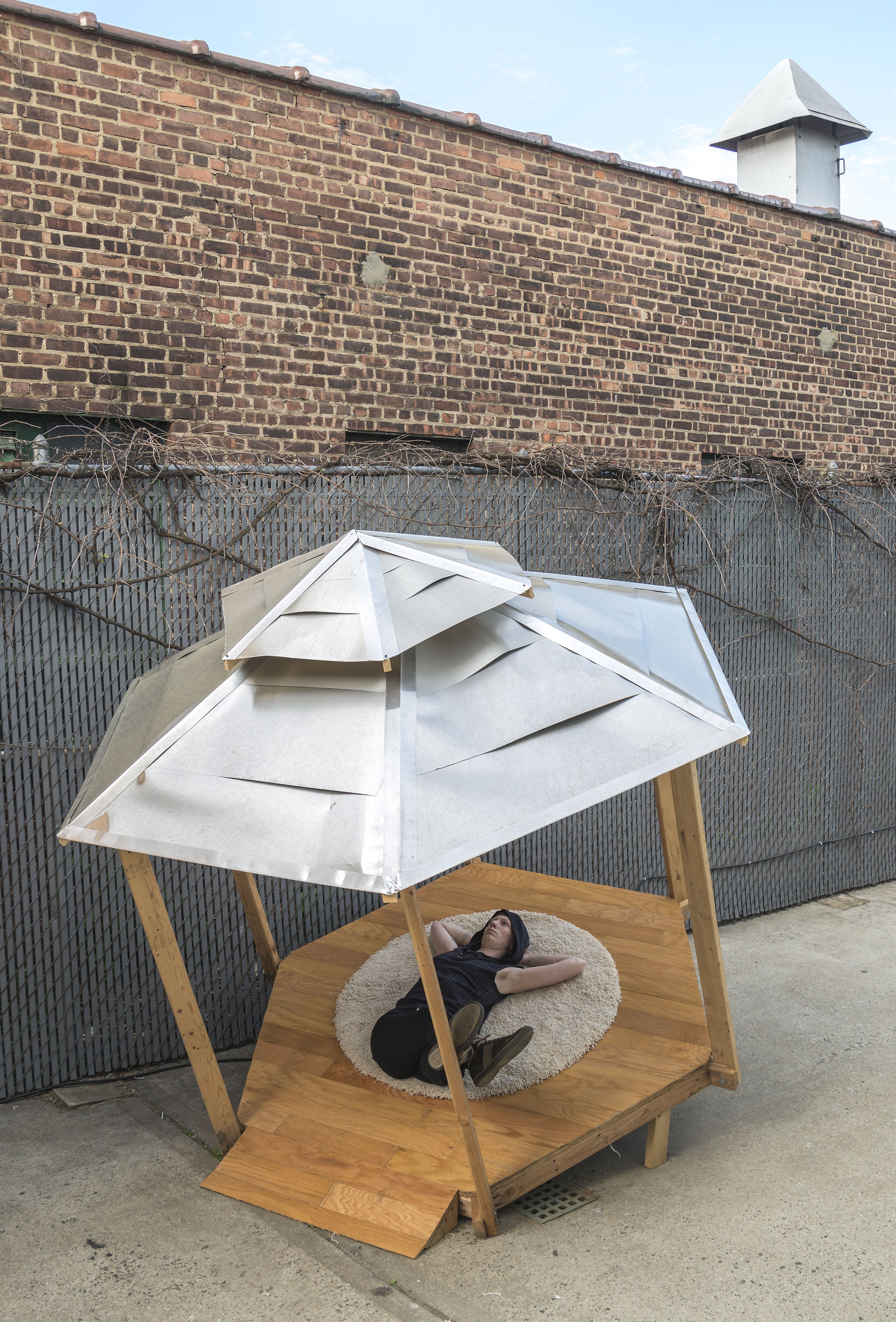
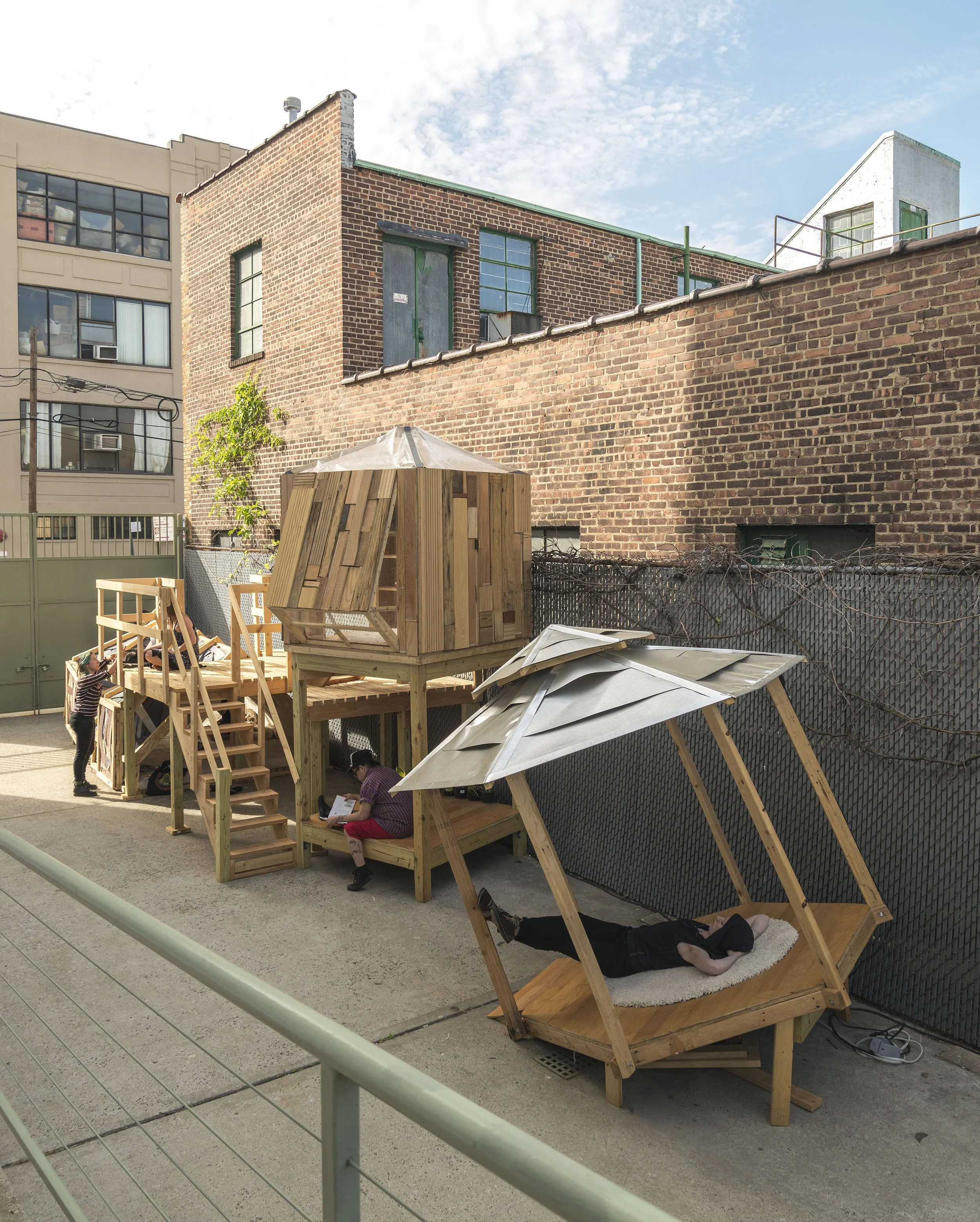
Artist Statement:
What previous work triggers your current project?
FROM DECORATION FOR CLAUSTROPHOBIC SPACES (2009– )
TO EMOTIONAL ARCHITECTURE (2013– ).
I used to put light windows in enclosed places. The windows showed b&w analogue moving landscapes that were made with paper cutouts, acetate layers, slow motors, and computer fans on top of overhead projectors. The lack of land/scapes in living spaces radically affects our emotions. With my projections, I have been creating outdoor environments inside for people to interact with. Nowadays, I’m more interested in building spaces or structures where people can also have a physical experience. These constructions are located inside other spaces in a symbiotic relationship. They provide a release situation from an issue that the host space was experiencing. I like to play with constructions in the same way kids build forts in their bedrooms in order to make spaces that better fit their bodies and imaginations.
How do you do research?
PROJECT IN PROGRESS MORE THAN SINGLE PIECES.
My art-pieces are contained within overarching projects that allow for the possibility of never ending. My research usually starts with the combination of leisure time, some travelling, and work and is guided by always being aware of the situation that my friends and I are living in. Then, I get more specific into what things I can learn and produce on my own. Lately, I have been stimulated by nomadic architecture and furniture books, emergency constructions for surviving situations, DIY manuals, history about shelters and how people develop skills to make themselves at home.
The walls of my studio are full of images that I take from different resources, and from time to time, I pause my no-ending research and organize the puzzle. In myemotional architecture project, I’m focusing on studying “nostalgic” outdoors structures and the idea of making shelters. I am also concerned about the interior situation of each structure that I build, and I see how I can misplace other ideas in it. I am interested in how spaces affect emotions and vice versa. The difference with an architect or interior designer is that I do not aim for a result that solves immediate problems to society, but I am looking for visitors to develop thoughts about their memories and actual life, and hopefully they can bring or imitate some idea at home.
